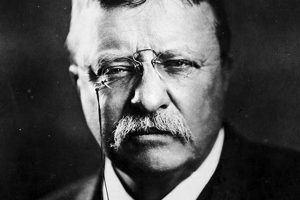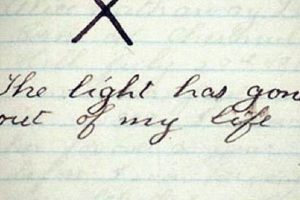
The connection between the 26th U.S. President and the South American rainforest and river basin is primarily historical and exploratory. It centers on the Roosevelt-Rondon Scientific Expedition, a 1913-1914 journey into the Amazon basin co-led by Theodore Roosevelt and Brazilian explorer Cndido Rondon. This expedition, following Roosevelt’s unsuccessful presidential bid, involved mapping an uncharted tributary of the Amazon River, later named the Rio Roosevelt (River of Doubt), and collecting specimens for scientific study. This ambitious undertaking significantly impacted both men, highlighting the region’s biodiversity while also exacting a physical toll on the former president.
This expedition holds a prominent place in Roosevelt’s legacy, showcasing his adventurous spirit and dedication to scientific exploration. It contributed to a broader understanding of the Amazonian ecosystem during a period of increasing global interest in natural sciences and geographic discovery. The journeys hardships and discoveries were widely publicized, fueling public fascination with the Amazon and solidifying its place in popular imagination. The expedition’s scientific findings contributed to collections at the American Museum of Natural History and the Smithsonian Institution, furthering biological and anthropological knowledge. Moreover, the expedition fostered international collaboration in scientific research and highlighted the need for conservation efforts in the Amazon, an issue that remains critical today.
Further exploration of this topic can involve examining specific aspects of the Roosevelt-Rondon expedition, such as its logistical challenges, its impact on the indigenous populations encountered, and its long-term consequences for conservation and scientific understanding of the Amazon. Analysis of the expedition’s impact on Roosevelt’s life and legacy is also a valuable area of study.
Tips for Researching the Roosevelt-Rondon Scientific Expedition
The following tips offer guidance for those interested in learning more about the 1913-1914 Roosevelt-Rondon Scientific Expedition to the Amazon Basin.
Tip 1: Utilize Primary Sources: Roosevelt’s own account, “Through the Brazilian Wilderness,” offers a firsthand perspective on the expedition’s challenges and discoveries. Candido Rondon’s journals and reports provide further insights from a Brazilian perspective.
Tip 2: Explore Museum Collections: The American Museum of Natural History and the Smithsonian Institution house specimens collected during the expedition, offering tangible connections to the journey.
Tip 3: Consider Historical Context: Research the political and scientific climate of the early 20th century to understand the expedition’s significance within a broader historical framework.
Tip 4: Investigate the Expedition’s Impact: Examine the expedition’s contributions to scientific knowledge, its influence on public perception of the Amazon, and its long-term consequences for conservation efforts.
Tip 5: Study the Biographies of Key Figures: Biographies of Theodore Roosevelt and Candido Rondon offer valuable background information and context for understanding their motivations and leadership during the expedition.
Tip 6: Analyze Maps and Charts: Examine maps of the Rio Roosevelt (River of Doubt) created before, during, and after the expedition to appreciate the challenges of charting unexplored territory.
Tip 7: Consider the Indigenous Perspective: Research the indigenous tribes encountered during the expedition and consider their interactions with the explorers.
By following these tips, researchers can gain a deeper understanding of the Roosevelt-Rondon Scientific Expedition, its challenges, and its lasting legacy.
This exploration of resources and research avenues provides a solid foundation for further investigation into the expedition’s significance and its place within the broader narrative of exploration, science, and conservation.
1. Exploration
Exploration forms the core of the “Teddy Roosevelt Amazon” narrative. The Roosevelt-Rondon Scientific Expedition, a challenging journey into uncharted Amazonian territory, exemplifies the spirit of discovery and its role in advancing both scientific knowledge and geographical understanding. This expedition, occurring in 1913-1914, underscores the enduring human drive to explore the unknown.
- Mapping the Unknown:
A primary objective of the expedition was to chart the course of the Rio da Dvida (River of Doubt), later renamed Rio Roosevelt. This involved meticulous surveying and mapping of a previously uncharted tributary of the Amazon River, contributing significantly to geographical knowledge of the region. This facet of exploration reflects the scientific rigor applied to the expedition.
- Scientific Discovery:
The expedition meticulously documented the region’s flora and fauna, collecting specimens for scientific study. These findings enriched biological and anthropological collections at institutions like the American Museum of Natural History and the Smithsonian, advancing scientific understanding of the Amazonian ecosystem. This reveals the interwoven nature of exploration and scientific advancement.
- Personal Challenge:
The expedition presented immense physical and psychological challenges for all participants, including Roosevelt himself, who suffered injuries and illness. This aspect of exploration highlights the inherent risks and hardships associated with venturing into unknown territories, emphasizing the resilience and determination required for such endeavors.
- International Collaboration:
The expedition involved collaboration between American and Brazilian explorers, demonstrating the potential for international cooperation in scientific discovery. The partnership between Theodore Roosevelt and Cndido Rondon exemplifies the benefits of shared expertise and resources in pursuing ambitious exploration goals.
These interconnected facets of exploration underscore the significance of the Roosevelt-Rondon Scientific Expedition. The journey’s legacy extends beyond geographical discovery and scientific advancement, showcasing the human capacity for endurance, collaboration, and the pursuit of knowledge in the face of adversity. The expedition remains a compelling example of exploration’s power to shape our understanding of the natural world and inspire future generations of explorers and scientists.
2. River of Doubt
“River of Doubt” is inextricably linked to “Teddy Roosevelt Amazon” as the central geographical feature and namesake of the Roosevelt-Rondon Scientific Expedition. This previously uncharted tributary of the Amazon River, known originally as the Rio da Dvida in Portuguese, became the expedition’s primary focus and the source of its greatest challenges and discoveries. Understanding the River of Doubt’s significance is crucial to comprehending the expedition’s impact.
- Uncharted Territory:
The river’s unexplored status in 1913 presented a significant challenge and a prime opportunity for geographical discovery. Mapping the river’s course was a central scientific objective of the expedition, requiring advanced surveying techniques and meticulous documentation. This endeavor contributed significantly to cartographic knowledge of the Amazon Basin and solidified the expedition’s scientific legacy.
- Navigational Perils:
The River of Doubt posed considerable navigational challenges, including treacherous rapids, dense jungle, and unpredictable currents. These obstacles contributed to the expedition’s hardships, resulting in loss of life, equipment, and supplies. The river’s difficult nature tested the explorers’ physical and mental endurance, shaping the narrative of perseverance that surrounds the expedition.
- Scientific Discoveries:
The river’s remote location provided access to previously unstudied ecosystems, enabling the collection of unique biological and anthropological specimens. These discoveries added to scientific collections at major institutions, advancing knowledge of the Amazonian flora, fauna, and indigenous cultures. The River of Doubt thus served as a gateway to scientific breakthroughs.
- Symbolic Importance:
The River of Doubt’s renaming to the Rio Roosevelt cemented its association with the former president and his adventurous spirit. The river became a symbol of Roosevelt’s post-presidential pursuits, embodying his dedication to exploration, scientific discovery, and the challenges of confronting the unknown. The name change solidified the river’s place in both history and popular imagination.
The River of Doubt’s significance extends beyond its geographical location; it represents the core challenges, discoveries, and symbolic weight of the Roosevelt-Rondon Scientific Expedition. The river’s unexplored nature, its navigational perils, and the scientific discoveries made along its banks are essential to understanding the expedition’s impact on both the scientific community and Roosevelt’s legacy. The “River of Doubt” became synonymous with the expedition itself, capturing the essence of exploration and its inherent risks and rewards within the vastness of the Amazon Basin.
3. Scientific Discovery
Scientific discovery served as a primary impetus and enduring legacy of the Roosevelt-Rondon Scientific Expedition into the Amazon Basin. While exploration and adventure motivated the undertaking, the expedition held significant scientific objectives, contributing substantially to the understanding of the Amazonian ecosystem in the early 20th century. This pursuit of knowledge, intertwined with the rigors of exploration, shaped the expedition’s narrative and its lasting impact.
The expedition yielded a wealth of biological and anthropological data. Extensive collections of flora and fauna specimens, documented and preserved for further study, enriched the collections of institutions like the American Museum of Natural History and the Smithsonian Institution. These specimens provided invaluable insights into the biodiversity of the Amazon, contributing to taxonomic classifications and ecological understanding. Furthermore, the expedition’s ethnographic observations and interactions with indigenous tribes provided valuable anthropological data, though viewed through the lens of early 20th-century perspectives. The mapping of the Rio da Dvida (River of Doubt), later renamed Rio Roosevelt, represented a significant cartographic achievement, furthering geographical knowledge of the Amazon basin. This meticulous surveying and mapping provided a crucial foundation for subsequent scientific exploration and resource management efforts in the region.
The emphasis on scientific discovery within the “Teddy Roosevelt Amazon” narrative underscores the expedition’s multifaceted nature. It transcends the realm of pure adventure, showcasing the interplay between exploration and scientific advancement. The expedition’s findings, preserved in museum collections and scientific publications, continue to inform research and contribute to a deeper understanding of the Amazonian ecosystem. While the expedition occurred over a century ago, its focus on scientific discovery serves as a valuable historical precedent for contemporary research and conservation efforts in the Amazon, highlighting the enduring importance of scientific exploration in understanding and protecting one of the world’s most biodiverse regions. The expedition also illustrates the complexities of scientific endeavors conducted within a specific historical context, prompting critical reflection on evolving ethical considerations related to indigenous cultures and environmental preservation.
4. Amazon Basin

The Amazon basin forms the geographical and ecological context for understanding the significance of “Teddy Roosevelt Amazon.” The Roosevelt-Rondon Scientific Expedition, a defining event in Roosevelt’s post-presidency, unfolded within this vast and complex ecosystem. The basin’s unique characteristics significantly influenced the expedition’s challenges, discoveries, and lasting impact. The Amazon’s immense scale, encompassing the largest rainforest and river system globally, presented logistical hurdles and amplified the risks faced by the explorers. The river’s fluctuating water levels, dense jungle terrain, and prevalence of tropical diseases posed constant threats to the expedition’s progress and the health of its participants. The expedition’s reliance on indigenous knowledge and logistical support further highlights the interconnectedness between the explorers and the Amazonian environment.
The Amazon basin’s biodiversity also played a crucial role in shaping the expedition’s scientific objectives. The region’s rich flora and fauna provided a wealth of specimens for collection and study, contributing significantly to scientific understanding of the Amazonian ecosystem. The expedition’s documentation of plant and animal life, combined with observations of indigenous cultures, expanded existing knowledge and laid the groundwork for future research. The River of Doubt, central to the expedition’s narrative, exemplified the Amazon’s vastness and unexplored nature. Mapping this previously uncharted tributary represented a major geographical achievement, underscoring the expedition’s contribution to cartographic knowledge of the Amazon basin.
Understanding the Amazon basin’s role as the backdrop for the Roosevelt-Rondon Scientific Expedition provides crucial context for appreciating the expedition’s significance. The basin’s ecological complexity, coupled with its geographical immensity, presented both opportunities and challenges for Roosevelt and his team. The expedition’s scientific discoveries, born from the basin’s rich biodiversity, contributed significantly to global understanding of the Amazonian ecosystem. This understanding remains relevant today, informing current conservation efforts and highlighting the importance of preserving this ecologically crucial region. The expedition’s legacy serves as a historical touchstone for appreciating the interplay between exploration, scientific discovery, and the enduring relationship between humanity and the natural world within the Amazon basin.
5. 1913-1914 Expedition
The 1913-1914 expedition is synonymous with “Teddy Roosevelt Amazon,” representing the specific timeframe of the Roosevelt-Rondon Scientific Expedition into the Amazon basin. This period demarcates a pivotal chapter in Roosevelt’s life, post-presidency, and significantly shaped his later years. The expedition, co-led by Brazilian explorer Cndido Rondon, involved charting the then-unmapped Rio da Dvida (River of Doubt), later renamed Rio Roosevelt. This ambitious undertaking involved navigating treacherous rapids, enduring harsh jungle conditions, and facing significant supply challenges. The expedition’s timeline directly influenced its outcomes, impacting both the scientific discoveries made and the hardships endured. For example, the rainy season coinciding with the expedition exacerbated river conditions, increasing the difficulty of navigation and contributing to illness among the explorers.
The 1913-1914 timeframe contextualizes the expedition within a specific historical moment, highlighting the state of scientific knowledge and exploration techniques of the early 20th century. The expedition’s reliance on traditional navigation methods, combined with the nascent understanding of tropical diseases, underscores the challenges faced by explorers of that era. The expedition’s documented findings, including biological specimens and cartographic data, represent a snapshot of the Amazon basin during this period. These discoveries, preserved in museum collections and scientific publications, offer valuable insights into the region’s biodiversity and geographical features as they existed in the early 1900s. Moreover, understanding the expedition’s historical context allows for a nuanced perspective on its impact on indigenous communities encountered along the River of Doubt.
Comprehending the 1913-1914 expedition as integral to “Teddy Roosevelt Amazon” offers valuable insights into Roosevelt’s legacy, the challenges of early 20th-century exploration, and the scientific significance of studying the Amazon basin. The expedition’s documented hardships, scientific discoveries, and historical context contribute to a broader understanding of both Roosevelt’s personal narrative and the broader themes of exploration, scientific endeavor, and human interaction with the natural world. Examining the expedition within this specific timeframe allows for a more focused analysis of its causes, consequences, and contributions to scientific knowledge. This understanding highlights the enduring importance of historical context in interpreting past events and their ongoing relevance. The 1913-1914 expedition ultimately serves as a window into a pivotal moment in history, illustrating the complexities of exploration and its lasting impact on our understanding of the Amazon Basin.
Frequently Asked Questions
This FAQ section addresses common inquiries regarding the 1913-1914 Roosevelt-Rondon Scientific Expedition to the Amazon basin, often searched for using keywords such as “Teddy Roosevelt Amazon.”
Question 1: What was the primary goal of the Roosevelt-Rondon Expedition?
The expedition’s main objective was to explore and map the Rio da Dvida (River of Doubt), a then-uncharted tributary of the Amazon River. Scientific research, including specimen collection and ethnographic observation, constituted a secondary but crucial goal.
Question 2: Why did Theodore Roosevelt undertake this expedition?
Following his unsuccessful 1912 presidential bid, Roosevelt sought adventure and a renewed focus on his scientific interests. The expedition offered an opportunity to explore uncharted territory and contribute to scientific knowledge.
Question 3: What were the major challenges faced during the expedition?
The expedition encountered numerous hardships, including difficult terrain, disease, food shortages, dangerous rapids, and the loss of life and equipment. The uncharted nature of the river and the harsh Amazonian environment presented constant challenges.
Question 4: What were the key scientific discoveries of the expedition?
The expedition collected numerous plant and animal specimens, contributing to biological collections at institutions like the American Museum of Natural History and the Smithsonian. Mapping the River of Doubt represented a significant cartographic achievement, and ethnographic observations provided insights, albeit historically contextualized, into indigenous cultures.
Question 5: What impact did the expedition have on Theodore Roosevelt?
The expedition took a significant physical toll on Roosevelt, exacerbating previous injuries and illnesses. While the journey tested his limits, it also solidified his adventurous reputation and provided material for his book, “Through the Brazilian Wilderness.”
Question 6: What is the lasting legacy of the Roosevelt-Rondon Expedition?
The expedition expanded scientific knowledge of the Amazon basin, contributed to geographical understanding, and heightened public awareness of the region. It also serves as a historical example of the complexities of exploration, scientific discovery, and cross-cultural interaction during the early 20th century.
Understanding the context and details of the Roosevelt-Rondon Expedition provides a richer appreciation of its significance. It serves as a reminder of the challenges and rewards of exploration and its enduring role in shaping scientific knowledge and human understanding of the natural world.
Further exploration of this topic can involve delving into specific aspects of the expedition, such as its impact on indigenous communities, the challenges of logistics and planning, or the long-term scientific contributions derived from the collected specimens.
Conclusion
Exploration of “Teddy Roosevelt Amazon” reveals a multifaceted narrative encompassing exploration, scientific discovery, and the enduring human fascination with the natural world. The Roosevelt-Rondon Scientific Expedition of 1913-1914, focused on charting the then-unmapped River of Doubt within the Amazon basin, stands as a testament to both the ambition and the inherent risks of early 20th-century exploration. The expedition’s scientific contributions, including the collection of biological specimens and cartographic data, expanded understanding of the Amazonian ecosystem. Simultaneously, the journey’s hardships underscored the physical and logistical challenges inherent in exploring uncharted territories. Analysis of the expedition requires considering its historical context, recognizing the prevailing scientific understanding and societal perspectives of the time. This nuanced approach allows for a deeper appreciation of the expedition’s significance, both in terms of its immediate impact and its enduring legacy.
The “Teddy Roosevelt Amazon” narrative continues to resonate today, prompting reflection on the complex interplay between human ambition, scientific progress, and environmental responsibility. The expedition’s legacy encourages further exploration of its impact on both the scientific community and the Amazon basin itself. Continued research and critical analysis remain crucial for understanding the expedition’s complexities and its enduring relevance in a world grappling with the ongoing challenges of conservation and sustainable development within ecologically sensitive regions like the Amazon rainforest. The expedition serves as a potent reminder of the importance of balancing human curiosity and the pursuit of knowledge with the imperative to protect and preserve the natural world for future generations.







